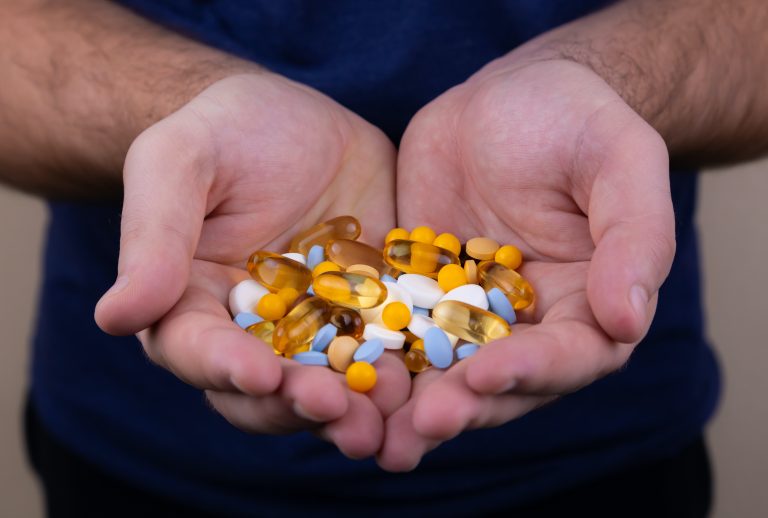Breaking Free from Big Food: Nurturing Our Children’s Innate Cravings for Natural Foods
What you’re about to read may seem obvious, “Of course, this is what would happen in this scenario.” Still, I think the implications of disregarding the basic premise of what I’m about to share will continue to damage our children’s health, further driving the obesity epidemic.
The Madison Hypothesis
“If all processed foods are removed from a child’s diet and surroundings as early as possible in their lifetime, then their taste buds and hunger cravings will be biologically primed to eat and desire natural foods.”
Madison’s Journey: From Ultra-Processed to Whole Foods
Watching Madison experience the wonders of food has been a joy. To see her palate change and adapt to various foods as she moves through different phases of growing up has also been enlightening. Especially once I removed most processed and all ultra-processed foods from her diet.
If one type of food has the potential to (and did) dominate all the other types in Madison’s diet, it is ultra-processed foods. Intuitively, we’ve always known these foods are designed to be highly palatable, to the point where it’s difficult to stop eating them. But unfortunately, we’ve come to accept them as part of our life. As early as I can remember, Madison embraced them – no fruit stood a chance at being a snack as long as Madison knew there were crackers, goldfish, or [insert any ultra-processed snack] in the cabinet or fridge.
I sometimes wonder – was she doomed from the start with the highly-processed baby formula we fed her? Who knows what the ultra-processed sugars and fats in these baby formulas are doing to our children’s brain chemistry during such a significant period of neural development – we may be getting them addicted to processed sugars from the outset.
You see, Madison has yet to learn what nutrition is. She has no inclinations, biases, or political beliefs on the matter; she will eat when she’s hungry and eat what’s good and not eat what isn’t. It’s the human biological instinct to survive in its most raw, unadulterated form: a young, innocent child. She is biologically wired to like what will help her grow and thrive the most from the outset.
The Dark Side of Big Food: Manipulating Children’s Taste Buds
But processed foods are designed to hijack that system. Big Food has laced its products with all sorts of highly palatable ingredients, from MSG to high-fructose corn syrup and artificial flavorings. They’ve also created food textures that make eating so easy and fun to do, foods that are soft, crunchy, and melt in your mouth. Even worse, they market the food to look appealing, adding artificial food dyes, making fun shapes, and wrapping it in colorful packaging with cartoons. It’s total, utter manipulation, entirely directed at our children.
This, without a doubt, is the epicenter of the current childhood obesity epidemic.
The world is infested with these highly processed foods and drinks. They are ubiquitous. No matter where you go, there they are, and usually at your child’s eye level. Notice, the next time you’re at a check-out line, the snacks below the counter. They’re not there for you; they’re there for your child to see and grab and persuade you to buy while you’re trying to check out. It’s all a ploy; to take advantage of the exhausted parent and create a child addicted to their products for the rest of their lifetime. And once our children start leaving the house, whether it’s to go to school or to a friend’s, you best be sure that ultra-processed foods will be there waiting for them too.
The Role of Parents: Protecting Our Children from Processed Foods
There’s only one thing that can prevent all this from happening. Not Big Pharma, not our doctors or healthcare system, and obviously not our public leaders whom these parties heavily influence. It’s parents. Parents are the only entity in this world not in some way biased by money when it comes to the welfare of our children.
Parents are the ultimate and sole barrier between children and Big Food and Agriculture’s manipulative powers. And that is why we parents, most likely unbeknownst to us, have become their next main target. If Big Industry can break us down and tear us apart, our children will have no one left to protect them. Our children will no longer be ours anymore; they will be theirs.
Parents have the sole power to establish lifelong healthy habits in their children. No one has more touch points early on in a child’s life than their parents to do so. Likewise, no one loves a child more than their parents. As such, we, the parents, must make the necessary changes in our lives and homes to give our children the best chance at a healthy life. No one else will.
Madison’s Transformation: A Return to Natural Cravings
So, what happened when I eliminated all processed and ultra-processed foods from our home, and as such, from Madison’s diet? It took some time, but she seemed to revert to a natural state of human biological food craving. She would eat what tasted good based on her current hunger level. As long as I knew I was serving her natural, whole foods, I trusted that she knew how much she needed to eat.
So, what tastes good? Well, the foods that carry the most biological necessary nutrients for her young body and mind to develop, I’d argue. Over time, I witnessed firsthand what was most delectable to her. Fatty foods, dairy, and fruits. Fatty foods, as in fatty, tender meats, like a ribeye steak or 80/20 burger. Dairy, as in whole raw milk, cheese, and yogurt. Fruits, as in sweet fruits, like oranges and blueberries, and non-sweet fruits, like zucchini and avocados.
Intuitively, this makes sense. Fatty foods, dairy, and fruits are primarily savory and sweet, two of the most potent tastebuds. They are also densely packed with the most necessary nutrients for survival, especially in the case of animal fats and raw dairy products.
Anytime I served Madison steamed or raw veggies, like broccoli, she barely ate them. But she was more inclined to consume them after cooking them in fat, like butter, but still, only sometimes. So, it made me think, what is Madison most biologically designed to eat here, the veggie or the fat?
The same happened with grains like rice. She would only eat a little of it if I had just served her steamed rice. But she would devour it when I mixed in some butter (and even more so with salt!). So, again, was it the grain or the fat?
Nutrient-Rich Foods: What Madison Loves to Eat
Through all these observations, I began experimenting with different combinations of meals that I believed covered all her nutritional needs to see what would be most likely eaten without the added influence or promises of ultra-processed foods. No, acts of coercion like “If you eat your dinner, you can have ice cream!”. I wanted to see in real-time what Madison would most likely eat when she sat at the dinner table.
After months of observation, the standard meal that Madison was most likely to consume is as follows: (1) a fatty protein, (2) a dairy product, (3) sweet fruit, and (4) non-sweet fruit. A couple of examples of these meals are below:
Interestingly, the order she eats the food in the meal is almost always the same. She will eat the sweet fruit first, then the fatty protein and the dairy product, and finally the non-sweet fruit.
Here are a couple of recipes of for meals I’ve made in the past:
- Ribeye Steaks with Sides – February 25, 2023
- Spaghetti Squash with Meatballs – February 23, 2023
The Importance of Mealtime Routines and Family Influence
Key to all this, though, is us, the parents, and her younger brother, eating the same thing as her. When someone eats something different, she loses interest in her food and wants to try whatever it is. I’ve also found that eating each meal at around the same time each day, on average, resulted in better consumption.
Additionally, Madison’s activity level that day affected how much she tended to eat. Specifically, how much did she play outside in the sunlight and fresh air? I noticed that the more often she played outside, the more she would eat. On the opposite end, if all she did leading up to dinner was watch TV, she tended to be more distracted and misbehaved, leading to eating less.
Snacking: The Impact on Mealtime Consumption
Furthermore, snacking around meals also played a significant role in her level of consumption. Generally, the closer she had a snack or drank milk to dinnertime, the less she would eat. But at the same time, if she missed her snack, she would be more agitated at dinner, prone to misbehave, and ultimately, eat less.
The type of snack was also necessary. I didn’t want her to overeat, nor did I want her to crash from the snack, which often occurs when kids are fed snacks high in sugar and processed carbs, like fruit juices/snacks/bars, crackers, etc. I found that a snack consisting of a fruit, sliced up, with some raw cheese and raw milk, usually did the trick. She never ate or drank too much and never crashed from it. As such, she was typically primed for the next meal, either lunch or dinner.
I also noticed with snacks that if the snack was of an ultra-processed variety, and Madison knew she’d be given it during snack time, or if it existed in the house in general, then she was less likely to eat her breakfast, lunch, or dinner. She would rather wait till snack time to eat the ultra-processed food. Again, this makes total sense. These foods are designed to hijack our children’s cravings and tastebuds.
Hudson’s Experience: A Different Start with Whole Foods
Much of what I observed from Madison was also mimicked by her younger brother, Hudson. He was even less exposed to ultra-processed foods’ taste- & mind-altering effects, so he began consuming the natural foods we served him more rapidly. He also, for the most part, shunned vegetables and grains in favor of meats, fruits, eggs, and raw cheese.
Preparing for Baby Number Three: A Whole Foods Experiment
With Christina pregnant and another baby arriving in a few months, I hope to test this hypothesis further. Again, as the new baby begins transitioning from breast milk, I will expose them to different whole foods and record the results. This time, the new baby will have zero exposure to ultra-processed foods, including baby formula (I will be making it from scratch to avoid all the additives the food processors add to it), to keep their original, primal senses of taste intact.
The Value of Variety: Exploring the World of Food Together
Even though the foods described above are the ones I have found Madison [and her brother, Hudson] are most likely to eat, we still serve them a broad spectrum of foods here and there. We firmly believe they should experience all the different types of foods out there, including the vast array of vegetables. We all know that taste buds can change over time (whether that’s from societal influence or not can be argued another time), so the last thing I would want to do is deprive our children of all the wonderful foods of the world.
It would also be incredibly obtuse to think I know exactly what’s best regarding nutrition and that my way is the only way. However, we are all on this journey together, and I will be learning just as much from Madison as she will be from me. I’m excited to see what we discover and how our eating habits and dietary predilections change over time.
Check out my Instagram and watch my stories to see me set the example of feeding our children whole foods for every meal every day!






